by Lorri | Sep 26, 2011 | Tips
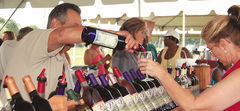 It’s easy to get impatient as you begin the journey to wine knowledge and enjoyment. Progress is slow — a glass here, a bottle there.
It’s easy to get impatient as you begin the journey to wine knowledge and enjoyment. Progress is slow — a glass here, a bottle there.
But sometimes-wine enthusiasts get a chance to progress by leaps and bounds instead of the baby steps of a taste here and a taste there. Local, Regional or National Wine festivals provide the opportunity to expand your horizons. Responsibly navigating your way through those hundreds of wine choices, however, takes patience and strategy.
WHAT TO EXPECT
As with any large, public event, wine festivals will give you a great opportunity to socialize and compare notes with other wine enthusiasts. Yes, you’ll taste wines, and lots of them, but you’ll also explore the world of wine.
Books have been written on how to develop professional tasting skills, but remember that the goal of your evening is not to judge the wines for the commercial wine trade, but for your own personal discovery and enjoyment. Your goal? Walking away with a heightened appreciation of the wonderful world of wine … and, of course, a list of some new favorites.
DISCOVERING THE WINES
Whether in the privacy of your home, a restaurant in Paris or at the next wine festival, you want to remember the wines you taste. Think of and classify them by color, aromas and taste. No need for fancy terms or the latest wine vocabulary. Keep it simple.
Look at the wine for color. If you thought wine was only red or white, take a closer look to discover the pinks, golden yellows, green tints, purple or even black colors that fill your glass.
Smell the wines for familiar aromas. Take the glass by the stem and give it a swirl to maximize the aromas. Don’t feel awkward placing your nose deeply into the glass to detect the aromas. You may smell simple fruits, smoke, citrus or even your grandmother’s rose perfume. It is the aroma that will help you remember what you enjoyed about the wine, grape or country of origin. (If you find the entire concept of swirling, smelling and tipping the glass a bit intimidating, practice at home with your wine at dinner or even water in a wine glass over the kitchen sink.) And finally— the moment you are waiting for and the reason to attend the event— taste. Swirl the wine in your mouth. Does it feel heavy or light? Does it taste sweet (like sugar on the tip of your tongue) or dry (complete lack of sweetness)? Does the wine have strong tannin or subtle tannin (a drying effect on the gums and sides of the mouth)? Think of the incredible taste descriptors as it fills your palate. It may be strawberry, lemon, nuts, berries, tobacco or even licorice.
Stay with these simple tips and you will discover wines that range from easy drinking to complex masterpieces, and remember, it’s only your personal enjoyment of the wine that matters.
TASTING BY CATEGORY
If the thought of having hundreds of wines at your fingertips is an overwhelming concept, try tasting them in groups. Easy methods include: By countries: Australia, Spain, Chile, Germany, etc.
By regions in big wine-producing countries: For France, Burgundy, Bordeaux or the Rhone Valley; in California sample wines from the Central Valley, Napa and Sonoma.
By grape varieties: cabernet sauvignon, chardonnay, sauvignon blanc, merlot or pinot noir.
This way of navigating big wine events lets you compare and contrast large amounts of wines you may not have had the opportunity to taste in one setting.
TAKE NOTES
Most tasting events offer listings of wines and ample room for jotting down notes. Take advantage of the note-taking to remember these wines after the event has ended. You can organize thoughts according to color, aroma and taste, or use a simple technique called “scribble” — stars, smiley faces, “best value”, “try with fish from Susan’s recipe” or even “great gift idea for Aunt June next Christmas.” The good news is that only you will be reviewing these wine notes later at home, so no need to focus on fancy details.
SPIT AND SPIT OFTEN
The last and possibly most important tip for large tasting events is acknowledging that the key word is “tasting” not “drinking.” If you plan on trying a large number of wines, you will definitely want to become well acquainted with the spittoon. Remember: Spitting is part of the tasting process and not a social faux pas. A responsible tasting atmosphere will only offer a quarter-glass pour. Don’t be offended by the amount of the pour or even feel embarrassed to dispose of excess wine into spittoons. It is all part of the tasting atmosphere, so you can have the fullest enjoyment of the evening.
TAKE ADVANTAGE
Remember, if you love wine, wine festivals supply a rare and incredible opportunity to sample a lot and learn a lot in a short time. To replicate the experience on your own would take hundreds of days and hundreds of dollars.
And you don’t even have to feel guilty for spending the modest amount of money required to get a ticket — it goes to a great cause.
by Lorri | Sep 21, 2011 | UnCorked
 Ignoring the wine etiquette rule of removing the foil before opening a bottle, I reached for the corkscrew and plunged it into the cork. Or attempted to. I was immediately faced with humility as I was once again introduced to the up-and-coming wine closure, the glass stopper. Picture the cork stopper on some high-end spirits, such as Scotch, but in place of cork, the stopper is made of glass.
Ignoring the wine etiquette rule of removing the foil before opening a bottle, I reached for the corkscrew and plunged it into the cork. Or attempted to. I was immediately faced with humility as I was once again introduced to the up-and-coming wine closure, the glass stopper. Picture the cork stopper on some high-end spirits, such as Scotch, but in place of cork, the stopper is made of glass.
The glass closure is one of the many options as the great cork debate continues. The closure, similar to a decorative decanter stopper, was developed as an alternative to the traditional cork and synthetic closures. It has been in use since 2003, mostly in Europe.
Unlike decorative stoppers, which often don’t provide an airtight seal, the Vino-Seal or Vino-Lok made by Alcoa uses an inert O-ring to provide a sterile seal, preventing cork taint contamination or oxidation.
The new closure brings a higher price tag than traditional cork due to its relatively high cost of production and this is why you may only see it used on higher-end premium wines. But the pioneers using this closure believe natural corks will become a thing of the past.
I would welcome the arrival of the glass stopper in more brands available to consumers. It makes perfect sense for not only battling the continuing quandary of cork taint but it’s the “no corkscrew needed” that is a big plus. You simply score the foil around the bottom of the drop ring on the bottle, and then pull the stopper. Another bonus: Wines can safely be aged standing up.
THE VALUE
- 2009 Calera Central Coast Pinot Noir, California (about $17 retail)
THE SPLURGE
- 2009 Bravante Vineyards Sauvignon Blanc, California (about $23 retail)
by Lorri | Sep 17, 2011 | UnCorked
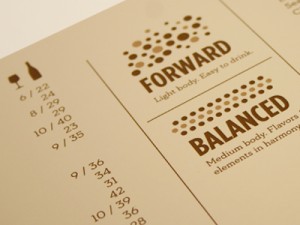 Ordering wine in a restaurant without a sommelier or wine-savvy waiter, particularly when the list is long on wines from unfamiliar vineyards, can be hit or miss.
Ordering wine in a restaurant without a sommelier or wine-savvy waiter, particularly when the list is long on wines from unfamiliar vineyards, can be hit or miss.
Who wouldn’t love a quick checklist of the world’s best and most versatile wines? By familiarizing yourself with the following versatile grape varietals, selecting the right wine for anything from steak to gazpacho will be less daunting.
Generally these wines will not be extreme in acidity, tannin or price.
ITALIAN
Because of the moderate acidity and tannins, most Italian wines complement an array of foods. But if put on the spot in an Italian restaurant, Chianti made from the sangiovese grape would be the most versatile wine on the list.
THE VALUE
- 2009 Coltibuono Chianti Cetamura DOCG, Italy (about $13 retail)
THE SPLURGE
- 2009 Coltibuono Chianti Classico Estate, Italy (about $28 retail)
ASIAN
The Gruner Veltliner grape complements almost any food offering. With its slight spiciness and bright acidity, it pairs well with the range of flavors in Thai, Vietnamese and Chinese cuisine. Growing in popularity, it’s showing up on many Asian restaurant wine lists.
THE VALUE
- 2009 Michlits Stadlmann Gruner Veltliner, Austria (about $17 retail)
THE SPLURGE
- 2009 Oriel Or tolan Falkenstein Gruner Veltliner, Austria (about $25 retail)
SEAFOOD
Keeping in mind seafood’s varying texture and weight, you need a wine that can not only complement but also compete. Chardonnay is found on almost every wine list in the world and is a safe bet to order with seafood.
THE VALUE
- 2010 Concannon Vineyards Chardonnay, California (about $12 retail)
THE SPLURGE
- 2010 J. Lohr Chardonnay Riverstone, California (about $18 retail)
FRENCH
Perhaps no other cuisine in the world demands a proper wine pairing more than French food. Rather than chose a pricey Bordeaux or Burgundy, consider a wine from Northern Rhone. It is likely to be one of the best values on the list, and it complements a wide range of dishes.
THE VALUE
- Cellier Des Dauphins Cotes Du Rhone Rouge, France (about $9 retail)
THE SPLURGE
- Domaine de la Becassonne Cotes du Rhone Rouge, France (about $18 retail)
by Lorri | Sep 7, 2011 | UnCorked
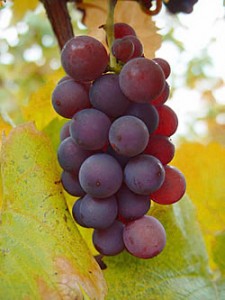 In California vineyards, a rising star is joining two classic dry whites. Chardonnay and sauvignon blanc have long been the most popular wines in America but the new marvel is pinot grigio (sometimes called pinot gris).
In California vineyards, a rising star is joining two classic dry whites. Chardonnay and sauvignon blanc have long been the most popular wines in America but the new marvel is pinot grigio (sometimes called pinot gris).
In the past decade, California has seen plantings more than quadruple — from around 2,500 acres in 2000 to almost 13,000 in 2010. That’s a lot of producers banking on the popularity of this charming yet undemanding grape.
Over the years, Americans began turning to pinot grigio to satisfy the desire for a white wine that is not as rich and oaky as chardonnay but a little softer and fruitier than sauvignon blanc. Pinot grigio fits this bill perfectly with its gamut of flavors and variety of styles.
The versatile grape will grow almost anywhere, but the cooler coastal regions of California are ideal. The cool growing season produces a wine that showcases the zesty acidity that is the hallmark of its clean, crisp style.
Even with summer winding down and the flavors of our hearty reds around the corner, there’s still time for a refreshing engagement with this delightful grape.
THE VALUES
- 2010 Mirassou Winery Pinot Grigio, California (about $13 retail)
- 2010 Beringer Founders’ Estate Pinot Grigio, California (about $12 retail)
- 2010 Concannon Vineyards Pinot Grigio, California (about $12 retail)
- 2010 Tamas Estates Pinot Grigio, California (about $12 retail)
- 2010 Cupcake Vineyards Pinot Grigio, California (about $10 retail)
THE SPLURGES
- 2010 Sterling Vineyards Vintner’s Collection Pinot Grigio, California (about $16 retail)
- 2009 MacMurray Ranch Sonoma Coast Pinot Gris, California (about $28 retail)
- 2010 Swanson Vineyards Pinot Grigio, California (about $26 retail)
- 2010 Coppola Diamond Pinot Grigio, California (about $16 retail)
by Lorri | Aug 31, 2011 | UnCorked
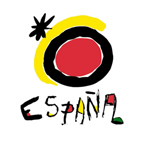 Rooted in centuries of tradition, Spain is a country with diverse and distinctive wines, including an exciting array with excellent value.
Rooted in centuries of tradition, Spain is a country with diverse and distinctive wines, including an exciting array with excellent value.
The Spanish government guarantees the authenticity of its wine by designating each with a region of origin or Denominacion de Origen (D.O.). The laws behind these distinctions define the location, grape used, maximum yields allowed, aging requirements in bottle and barrel and alcohol content. More than 60 wine regions have unique designations offering a world of diversity for the wine drinker.
SPARKLING
Spanish cava had been produced in the Penedes region of Catalonia since the late 19th century using the same winemaking method as the honored Champagne but with indigenous grapes. The resulting wine is a fresh bubbly at half the price of many inexpensive Champagnes.
THE VALUE
- NV Segura Viudas Brut Reserva, Spain (about $12 retail)
THE SPLURGE
- NV Sumarroca Cava Brut, Spain (about $19 retail)
WHITE
Albarino is stealing the limelight for white wine around the world. It is produced and grown in the northwest corner of Spain in the Rias Baixas region, which is cooler than other regions in the country and contributes to the crisp, fragrant characteristics of this wine.
THE VALUE
- 2010 La Cana Albarino, Spain (about $16 retail)
THE SPLURGE
- 2009 Abadia San Campio Albarino, Spain (about $25 retail)
ROSE
The Rioja region, known the world over for its red wines, produces several distinct dry roses, which beg to be discovered.
THE VALUE
- 2010 Rene Barbier Rose, Spain (about $10 retail)
THE SPLURGE
- 2010 Marques de Caceres Rioja Rose, Spain (about $14 retail)
RED
Rioja is the most recognized of Spain’s red wines. In recent years, the region has experienced tremendous growth due mostly to the production of exceptional wines offered at a reasonable price. These wines are produced from the tempranillo grape and are fresh, fruity, robust and complex.
THE VALUE
- 2008 Campo Viejo Rioja Crianza, Spain (about $13 retail)
THE SPLURGE
- 2008 Condesa de Leganza Crianza, Spain (about $18 retail)
SHERRY
Often overlooked or discounted due to its undeserved reputation as low in quality and overly sweet, Spanish sherry deserves a second look. Today, Spanish producers are bottling some of the most luscious, rich and smooth sweet wines in the world.
THE VALUE
- Dry Sack 15 Year Old Sherry, Spain (about $30 retail)
THE SPLURGE
- Fernando de Castilla Oloroso Sherry, Spain (about $40 retail)
by Lorri | Aug 24, 2011 | UnCorked
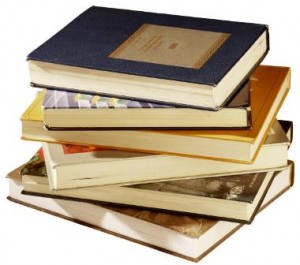 As with wine, I believe books written about wine also have a shelf life. Some age well, and others don’t. Being a wine geek, most of my reading involves, as you guessed, books written about wine. I love flipping through my old books, one favorite being a used copy of Wines of The World, an immense and progressive book, for the time it was printed in the late 1960s.
As with wine, I believe books written about wine also have a shelf life. Some age well, and others don’t. Being a wine geek, most of my reading involves, as you guessed, books written about wine. I love flipping through my old books, one favorite being a used copy of Wines of The World, an immense and progressive book, for the time it was printed in the late 1960s.
But much has changed in the international world of wine.
Books written 40 years ago were generally intimidating and overwhelming, even for the connoisseur. But with today’s selections there are no excuses not to delve into the wine books awaiting your exploration.
Here are a few of my favorites:
Wine All-in-One for Dummies by Ed McCarthy, Mary Ewing-Mulligan and Maryann Egan (For Dummies, $20). This book is ideal for anyone beginning their exploration, those starting with zero knowledge of wine or those who know a little but want to learn and need a starting point. It helps readers decode the complex variety of grapes, includes information on wine regions and answers beginners’ questions on all aspects of wine. It’s approachable and not overly technical, making it an easy place to begin your exploration.
The Oxford Companion to Wine by Jancis Robinson (Oxford University Press, $60). Every wine lover’s bookshelf should have a copy of this book. I referred to my personal copy so many times the spine and cover tore off my first edition; fortunately, it was just in time for the second edition printing. Now in its third edition, this book is recognized as the authoritative guide, covering every aspect of wine and winemaking, including in-depth analysis of the vast range of wines available around the world. If you add only one book to your collection it should be this one.
Napa Valley: The Land, The Wine, The People by Charles O’Rear and Daphne Larkin (Wineviews Publishing, $45). Napa Valley was bestowed an honor with O’Rear as the photographer behind this stunning book. I recommend it for anyone searching for an indulgence of the senses. It’s a photographic journey through one of the world’s most amazing wine regions. O’Rear, a former National Geographic photographer, has been documenting the area since 1978. Today he owns the largest collection of wine-related photos in the United States. His most famous — and probably most viewed in the world — is Bliss, the default Microsoft wallpaper on a billion computers around the world, according to the publisher.
Bordeaux: People, Power and Politics by Stephen Brook (Mitchell Beazley, $15). Becoming more difficult to find, this is still one of my favorite wine books in my library. It’s like a wine-culture book and a spy and romance novel all wrapped into one. This unique exploration into Bordeaux’s wine trade goes behind the scenes to discover how the region’s wines are produced, marketed and sold, revealing an intriguing look into the power of the press, merchants and consumers over prices and wine culture.
 It’s easy to get impatient as you begin the journey to wine knowledge and enjoyment. Progress is slow — a glass here, a bottle there.
It’s easy to get impatient as you begin the journey to wine knowledge and enjoyment. Progress is slow — a glass here, a bottle there. Ignoring the wine etiquette rule of removing the foil before opening a bottle, I reached for the corkscrew and plunged it into the cork. Or attempted to. I was immediately faced with humility as I was once again introduced to the up-and-coming wine closure, the glass stopper. Picture the cork stopper on some high-end spirits, such as Scotch, but in place of cork, the stopper is made of glass.
Ignoring the wine etiquette rule of removing the foil before opening a bottle, I reached for the corkscrew and plunged it into the cork. Or attempted to. I was immediately faced with humility as I was once again introduced to the up-and-coming wine closure, the glass stopper. Picture the cork stopper on some high-end spirits, such as Scotch, but in place of cork, the stopper is made of glass. Ordering wine in a restaurant without a sommelier or wine-savvy waiter, particularly when the list is long on wines from unfamiliar vineyards, can be hit or miss.
Ordering wine in a restaurant without a sommelier or wine-savvy waiter, particularly when the list is long on wines from unfamiliar vineyards, can be hit or miss. In California vineyards, a rising star is joining two classic dry whites. Chardonnay and sauvignon blanc have long been the most popular wines in America but the new marvel is pinot grigio (sometimes called pinot gris).
In California vineyards, a rising star is joining two classic dry whites. Chardonnay and sauvignon blanc have long been the most popular wines in America but the new marvel is pinot grigio (sometimes called pinot gris). Rooted in centuries of tradition, Spain is a country with diverse and distinctive wines, including an exciting array with excellent value.
Rooted in centuries of tradition, Spain is a country with diverse and distinctive wines, including an exciting array with excellent value. As with wine, I believe books written about wine also have a shelf life. Some age well, and others don’t. Being a wine geek, most of my reading involves, as you guessed, books written about wine. I love flipping through my old books, one favorite being a used copy of Wines of The World, an immense and progressive book, for the time it was printed in the late 1960s.
As with wine, I believe books written about wine also have a shelf life. Some age well, and others don’t. Being a wine geek, most of my reading involves, as you guessed, books written about wine. I love flipping through my old books, one favorite being a used copy of Wines of The World, an immense and progressive book, for the time it was printed in the late 1960s.